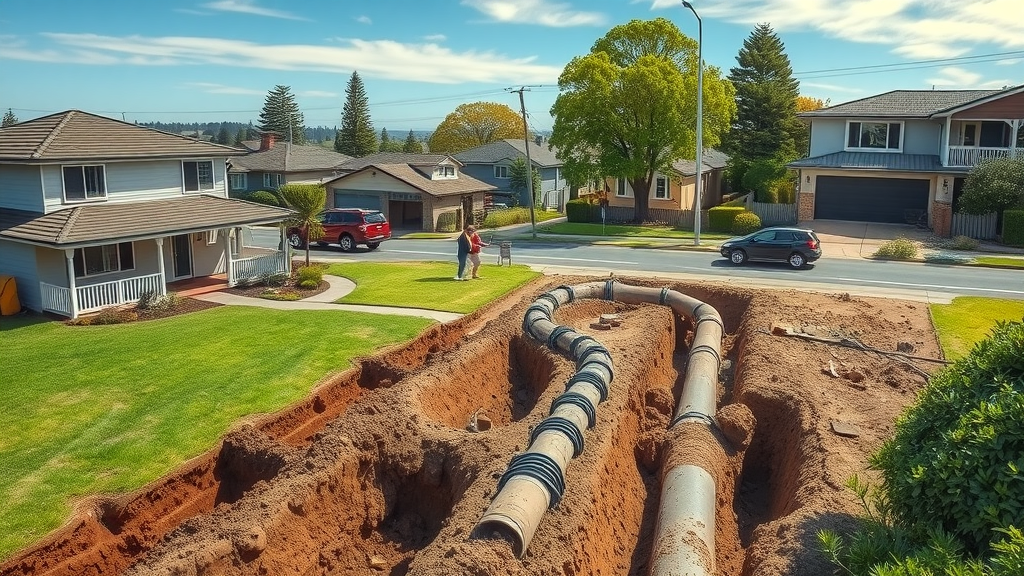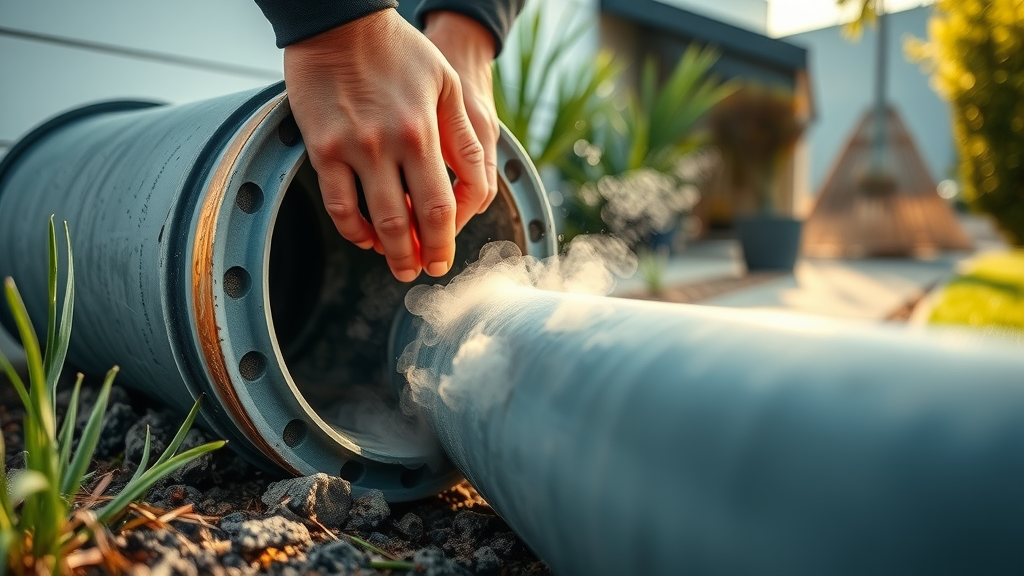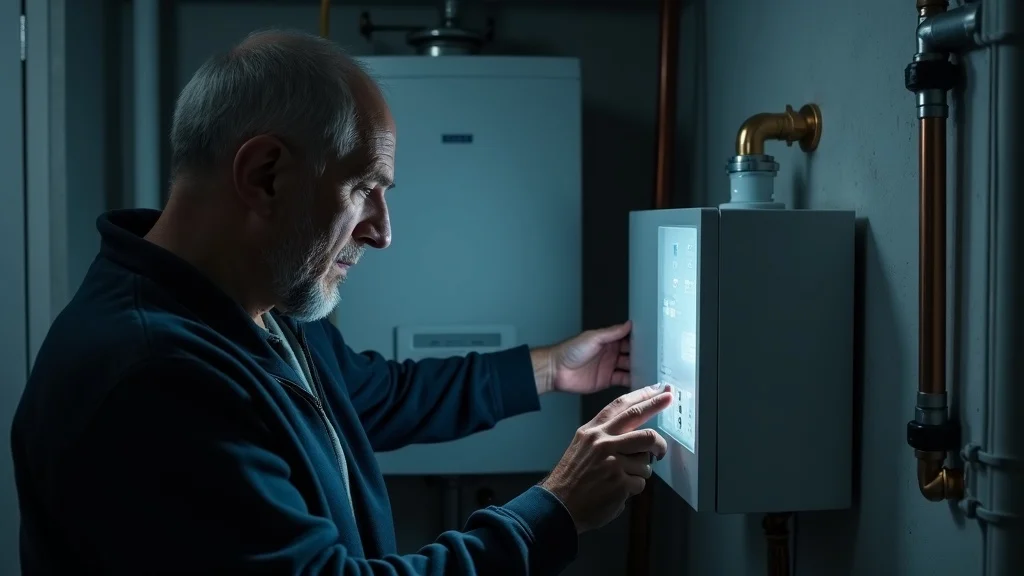Are Your Pipes on the Brink? Discover Why Pipe Relining Is Changing the Game
Cracked, leaking, or blocked pipes are among the most disruptive—and expensive—problems homeowners can face, particularly across regions with aging infrastructure like the Northern Beaches. Every year, residents are faced with mounting repair costs and headaches that extend far beyond the inconvenience of a slow-draining sink or periodic overflow. What's worse, traditional plumbing fixes often involve days of noisy digging, lawn destruction, and massive bills, only to see issues resurface a few years later.
The pressure on our underground plumbing systems has only increased as properties age and tree root systems reach deeper in search of water, leading to a growing epidemic of persistent pipe problems. In environments like the Northern Beaches, where old terracotta and cast iron pipes are common, temporary fixes just won't cut it. The limitations of these old-school repair methods leave homeowners constantly on the defensive—asking not "if," but "when" they'll find pools forming in their backyard or unpleasant odours in their home.
Homeowners often miss the early signs their pipes are already failing beneath the surface. “If your toilet water level rises or drops below normal, that’s a red flag,” says Kevin Barry, owner of Streamline Drains & Pipelines. “Gurgling noises, bad smells, saturated grass, or even lack of stormwater flow during rain — these are all signs you might already have a blocked or broken pipe.” Acting early could mean the difference between a fast fix and a full-blown underground emergency.
Understanding how modern solutions like pipe relining can provide a more dependable outcome is essential for anyone looking to stop the cycle of recurring repairs and escalating costs.
Understanding Pipe Relining: The No-Dig Solution Outperforming Old-School Repairs

Pipe relining is an innovative, trenchless technology dramatically shifting the way pipes are repaired in suburban and residential communities. Instead of the chaos of excavators and trenches, this method involves inserting a flexible, resin-saturated liner into the existing damaged pipe. Once in place, this liner hardens—usually within a matter of hours—creating a new, durable "pipe within a pipe." The result is a seamless, long-lasting pipeline that restores function and seals out future intrusions, like tree roots, groundwater, or soil movement, without destroying landscaping, driveways, or garden beds.
What makes pipe relining even more relevant for homeowners in the Northern Beaches is the rising frequency of root intrusion, corrosion, and ground movement—not to mention the risk of pipes collapsing under older homes. Standard "dig-up and replace" methods don't always target the entire underlying issue, leading to recurring blockages and never-ending maintenance calls. Many residents are unaware that continued reliance on these outdated repairs can create a cycle of escalating disruption, environmental risk, and mounting expenses. Failing to keep up with modern approaches can mean not just more inconvenience, but real damage to property values and quality of life for families.
According to Kevin, traditional repairs aren’t just disruptive — they often don’t last. “Dig-and-replace sounds simple, but it’s costly, labour-intensive, and more prone to future failure, especially where clay joins PVC,” he explains. “Tree roots love to exploit those weak points. Relining avoids that entirely with a seamless, joint-free pipe inside your existing one.”
How Pipe Relining Transforms Pipe Repairs—Affordable, Durable, and Stress-Free
Drawing on decades of technical knowledge and experience, the practice of pipe relining has set new benchmarks for what property owners can expect from underground repairs. Solutions pioneered and refined by specialists have made relining the preferred approach for tackling everything from blocked drains to cracked stormwater and sewer lines. One of the standout benefits is cost-efficiency: most jobs avoid the expense and upheaval of full-scale excavation, saving homeowners up to 75% compared to traditional replacements. Completed within hours, not days, these repairs mean less impact on daily routines and zero destruction of established gardens or paved surfaces.

Beyond immediate convenience, pipe relining offers unmatched peace of mind and reliability. With warranties extending 30 years or more, and a life expectancy up to 60 years, relined pipes essentially eliminate the cycle of emergency repairs and ongoing maintenance. Homeowners gain more than just a quick fix—they receive an Australian standard-approved upgrade that addresses both current damage and strengthens pipes against future problems. For areas like the Northern Beaches, where unpredictable soil, tree root invasions, and salt air all contribute to pipe deterioration, this resilience is invaluable.
Why No-Dig Pipe Relining Is Tailor-Made for Northern Beaches Properties
Many homes along the Northern Beaches blend classic architecture with established gardens and dense tree cover, making them especially vulnerable to underground pipe issues. Traditional dig-and-replace methods can wreak havoc on valued landscaping, driveways, or tight spaces, sometimes costing thousands just to restore a property to its original state. The no-dig relining method addresses this frustration by allowing repairs to be carried out beneath lawns, patios, and even driveways without noticeable surface disruption. This is particularly advantageous in suburban areas where preserving hardscaping and established gardens isn't just about aesthetics, but maintaining home value and family lifestyle.
Relining is not only less invasive; it's also adaptable to pipes of almost every age and material, from crumbling clay to corroded cast iron. The technology is a game-changer for properties that have dealt with repeated water ingress, dampness, or garden flooding due to damaged drains—restoring full functionality where older approaches repeatedly failed. For local homeowners who care about both their property and their peace of mind, this approach is a clear step forward.

Fast Turnarounds, Long-Term Results: How Modern Technique Outpaces Old Repairs
Unlike the lengthy scheduling and disruption associated with conventional pipe repairs, relining provides a fast and reliable fix, often restoring service within hours. The process typically starts with a thorough camera inspection, ensuring the problem is understood and targeted with precision. High-pressure water jets clear away obstructions, after which the resin liner is inserted, inflated, and cured in place. This efficiency means that even major issues can be addressed without extended downtime—families and businesses alike benefit from repairs that don’t eat into week-long schedules or disrupt essential services.
The longevity and integrity provided by modern relining further elevate its value. Certified to meet strict Australian standards (AS3600), these repairs are not only built to last decades, but are also backed by industry-leading warranties. This makes relining an especially prudent choice for investment properties and strata communities, where maintenance budgets and long-term peace of mind are paramount. With less upheaval, faster completion, and superior outcomes, it’s clear why outdated dig-and-replace jobs are taking a back seat to trenchless technology.
Seeing Is Believing: Camera Inspections and the Power of Proactive Maintenance
One of the less-discussed—but equally vital—benefits of pipe relining is how it leverages technology to see and fix problems before they escalate. Camera-based inspections are now an essential part of the relining process, allowing a real-time view into the heart of underground pipes. Instead of uncertain guesses and exploratory digging, high-definition footage pinpoints leaks, obstructions, and collapsed sections with surgical accuracy.

For the Northern Beaches community, where each lot and landscape is unique, this approach means that repairs are tailored with exactitude. It also means property owners can act quickly when early symptoms arise—such as slow drains or recurring toilet overflows—intervening before small annoyances escalate into insurance claims or widespread property damage. By embracing this blend of preventative technology and minimally invasive repair, homeowners gain not just functional drains, but a future-proof solution to utility management.
Streamline Drains & Pipelines: Setting the Standard for Pipe Relining in Sydney
For more than three decades, Streamline Drains & Pipelines (NSW) P/L has played a pivotal role in pioneering and perfecting pipe relining in Sydney and beyond. As the original domestic pipe relining company in NSW, their roots run deep in the plumbing community—they were the first to introduce resin-based relining technology over 35 years ago, a feat that underscores a commitment to progress and innovation. Their team operates with a principle of minimal disruption, offering up to 60 years of warranted performance and maintaining a focus on delivering permanent solutions to challenging problems.
The Streamline philosophy is built upon technical mastery and a customer-first mindset. By insisting on the use of WaterMark-certified, ultra-strong epoxy resins, and placing transparency at the core of their process, the company ensures that each job—domestic, commercial, or industrial—sets the highest standard for reliability and compliance. Streamline’s ongoing investment in the latest tools, such as surgical-grade inspection cameras and trenchless curing UV technology, allows them to resolve even the most daunting pipe failures with precision and confidence. Their contributions have shaped industry norms, received international accolades, and earned the trust of residents and organisations throughout the Northern Beaches and greater Sydney region.
As Kevin says, “Relining isn’t just a patch — it’s a structural upgrade. It protects homes against the exact issues we see every day: collapsing clay, tree root invasions, and unstable soil. We combine decades of know-how with the right tools and materials to deliver a result that lasts.”
When the Work Speaks for Itself: Real Stories of Relining Success
The true impact of pipe relining often comes to life in stories from real residents whose homes and lifestyles were safeguarded against plumbing disasters. Take, for example, the kind of experience shared by satisfied clients dealing with complex drain issues:
“We had a complicated job with a common sewer line impacting an Aged Care Facility and large Covent building. Alex, Kevin and the team at StreamLine Drains & Pipelines NSW Pty Ltd successfully relined over 30m of sewer pipe without any hiccups. They delivered quality work, sensitively and efficiently with minimal inconvenience. They understand your urgency and guarantee their work. I recommend you contact these guys to get your job done right.”
Experiences such as these illustrate the peace of mind that modern pipe relining offers. When critical problems can be solved quickly, discreetly, and cost-effectively, property owners are empowered to protect both their assets and their daily routines. The relief in finally breaking the cycle of recurring repairs is a testament to the value delivered by expert trenchless specialists.
Rethinking Pipe Repairs: Why Relining Is Redefining Expectations in the Northern Beaches
As infrastructure ages and environmental pressures intensify, traditional plumbing repairs are reaching their limitations across regions like the Northern Beaches. The rapid advances in pipe relining technology, championed by industry experts, mark a clear evolution in how hidden pipework is repaired and protected for future generations. With no need for destructive digging, faster repairs, and enduring warranties, relined pipelines offer a superior path to lasting peace of mind.
By embracing the expertise and forward-thinking solutions provided by trailblazers such as Streamline Drains & Pipelines, residents and property managers can ensure that their homes and communities remain resilient in the face of changing needs. As the new gold standard for underground repairs, pipe relining is poised to carry the Northern Beaches into a future defined by efficiency, reliability, and homeowner confidence.
Contact the Experts at Streamline Drains & Pipelines (NSW) P/L
If you’d like to learn more about how pipe relining in the Northern Beaches could benefit your home or property, contact the team at Streamline Drains & Pipelines (NSW) P/L.
📞 Phone: +61 2 8261 0199
🌐 Website: https://streamlinepipes.com.au/
Streamline Drains & Pipelines (NSW) P/L Location and Availability
🕒 Hours of Operation:
📅 Monday: 7:00 am – 7:00 pm
📅 Tuesday: 7:00 am – 7:00 pm
📅 Wednesday: 7:00 am – 7:00 pm
📅 Thursday: 7:00 am – 7:00 pm
📅 Friday: 7:00 am – 7:00 pm
📅 Saturday: 9:00 am – 3:00 pm
📅 Sunday: 9:00 am – 3:00 pm
 Add Row
Add Row  Add
Add 




Write A Comment